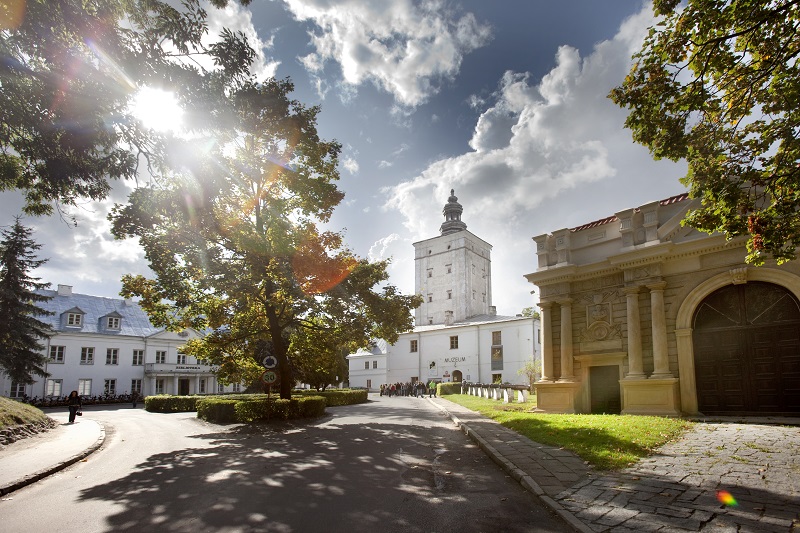Biała Podlaska was once a property of the Radziwiłł family, associated primarily with the magnificent castle complex from the XVII-XVIII century and the valley of the Krzna River, a picturesque tributary of the Bug River.
Visitors will be interested in the Museum of Southern Podlasie, presenting the collection of Bazyli Albiczuk's works and one of the largest collections of Russian icons from the XVII and XIX centuries in Poland. The capital of the Southern Podlasie is a great place for those seeking architectural monuments and those interested in history. The most interesting are:
The Gatehouse, which led to the Radziwiłł palace and park complex. It was built in the XVII century by the efforts of Katarzyna Radziwiłł from the Sobieski family. The façade of the gate was modelled on the Triumphal Arch.
The former building of the Academy of Biała Podlaska dates back to 1628. The Academy educated many famous people, including Józef Ignacy Kraszewski, January insurgents - Roman Rogiński and priest Stanisław Brzóska. Stefan Żeromski and Julian Ursyn Niemcewicz were also associated with the school. Currently, the former academy houses the J. I. Kraszewski High School.
A very interesting architectural object is the church of St. Anne, built in 1597-1602, based on the foundations of the Arian church. The chapel dedicated to St. John Cantius from 1625 is considered one of the most valuable Renaissance works in Podlasie. It is also worth visiting the St. Mary of the Angels and St. Anthony Church built in 1673-87, and the Monastery of Friars Minor Capuchin which dates back to the years 1687-92.
Events in Biała Podlaska:
Summer Art Meetings (July)
Summer Cinema in the Radziwiłł's Park (August)
St. Michael's Fair (September)
European Festival of Traditional Games and Plays (September)





